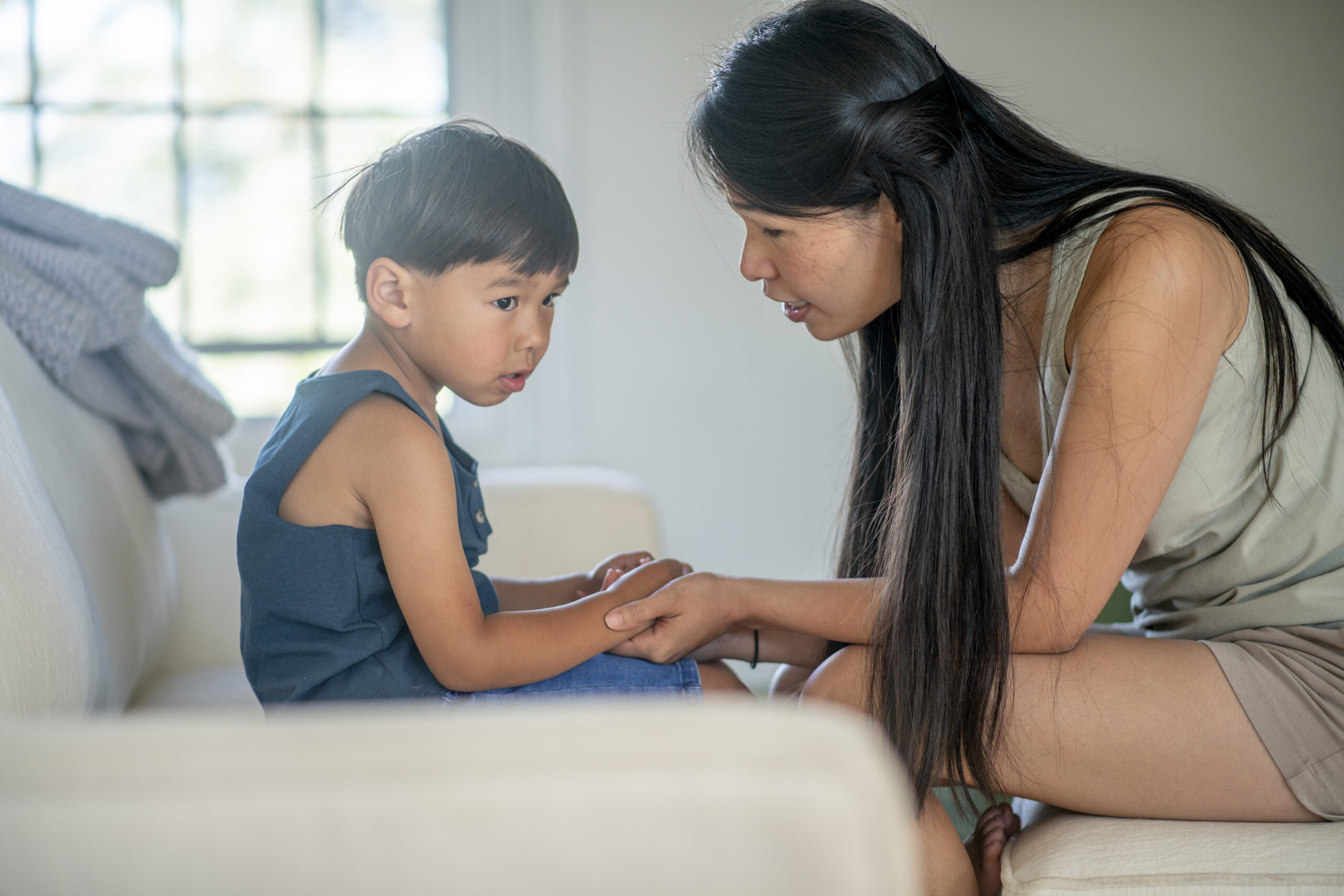
Are my toddler’s speech and language skills delayed because of the COVID-19 pandemic? As speech language pathologists (SLPs), this is one of our most frequently asked questions we get asked as of late, but the answer is not clear. We do know that millions of babies were born in the past two years amid lockdowns, mask mandates, daycare shutdowns, parents working from home, and many other lifestyle changes. While these lifestyle changes were crucial to curbing the spread of COVID-19, the question remains: Will our little ones pay a price developmentally because of these changes?
The truth is, it may be too soon to tell
Currently there are limited studies linking the impact of the pandemic on developmental delays mainly because these studies are all happening in real time. But here are some things we do know:
During lockdowns, families were much more isolated
This limited social interactions such as play dates and child-focused group activities. This could have negatively impacted a child’s social language development.
Mask wearing covered up an important source of social, emotional, and linguistic information: our mouths.
As SLPs we know that children learn language through auditory and visual cues, and when a child, teacher, or caregiver is masked, those visual cues are missing, which could in turn lead to missed communication opportunities.
Kids got more screen time than ever before
Parents who were forced to work from home while also caring for their babies or toddlers were likely stressed and spread thin, making it tough to have that one-on-one time with their little ones. Studies show that children’s screen time nearly doubled during the pandemic in part because of parents trying to balance it all.
There are a few studies that found a possible correlation between developmental delays in babies and toddlers born during the pandemic
These studies showed that babies born during the pandemic scored slightly lower on fine and gross motor skills and verbal and overall cognitive development than their pre-pandemic peers. However, it should be noted that these studies had a small sample size and therefore we must be cautious in the interpretation of the findings. But at the same time, we have seen an influx in our pediatric population as well. We are getting calls, emails, and DMs daily from parents of toddlers born during the pandemic who are not meeting communication milestones – you can find a list of updated milestones from the CDC here.
Other signs of delays include:
- If a child does not use gestures to communicate (see CDC milestones), such as waving, clapping, or pointing.
- A child who is not attempting to imitate gestures, actions, sounds, or words.
- A child who does not babble or make many vocalizations.
- A child who does not say as many words to communicate as other children their age.
- If the child is not trying to copy your words.
- If a child is not starting to combine two words together by 24 months old (like “more milk”).
- A child who does not interact or play as well as other children their age.
- Paying attention to whether your child can execute easy-to-follow instructions (e.g., “put down the toy”)
Steps parents can take
Although this is alarming and causes concern among developmental professionals, there is so much that parents can do at home to help their little ones start meeting developmental milestones:
- Parents can start by talking to their little ones!
- Narrate what you are doing during everyday routines. This type of talk and repetition will help to build their child’s understanding of the world around them.
- Parents can also get face-to-face with their little ones, which will allow them to watch facial expressions and mouth movements, a very important part of speech development.
*For more ways to make a language-rich home environment, follow us on Instagram @speechsisters or at speechsisters.com *
RESOURCES:
https://www.science.org/content/article/small-study-suggests-pandemic-may-slow-babies-development
https://jamanetwork.com/journals/jamapediatrics/fullarticle/2787479?resultClick=1
https://www.medrxiv.org/content/10.1101/2021.08.10.21261846v1.full




